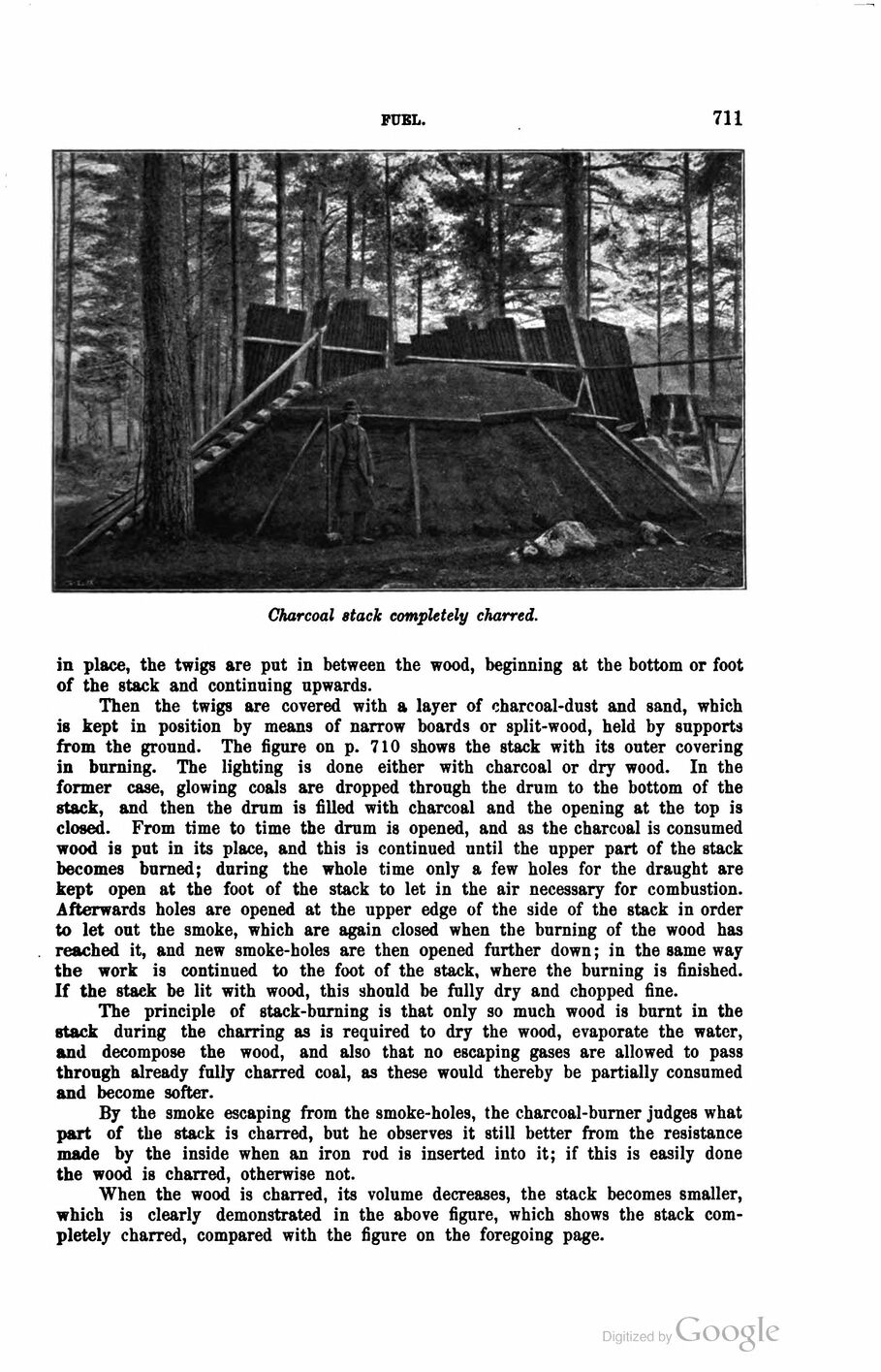
Full resolution (JPEG) - On this page / på denna sida - Second part - IX. Mining Industry and Metal Production - 2. The Iron and Steel Industry. By the late Prof. J. G. Wiborgh - Fuel

<< prev. page << föreg. sida << >> nästa sida >> next page >>
Below is the raw OCR text
from the above scanned image.
Do you see an error? Proofread the page now!
Här nedan syns maskintolkade texten från faksimilbilden ovan.
Ser du något fel? Korrekturläs sidan nu!
This page has never been proofread. / Denna sida har aldrig korrekturlästs.
FUEL.
711
Charcoal stack completely charred.
in place, the twigs are put in between the wood, beginning at the bottom or foot
of the stack and continuing upwards.
Then the twigs are covered with a layer of charcoal-dust and sand, which
is kept in position by means of narrow boards or split-wood, held by supports
from the ground. The figure on p. 710 shows the stack with its outer covering
in burning. The lighting is done either with charcoal or dry wood. In the
former case, glowing coals are dropped through the drum to the bottom of the
stack, and then the drum is filled with charcoal and the opening at the top is
closed. From time to time the drum is opened, and as the charcoal is consumed
wood is put in its place, and this is continued until the upper part of the stack
becomes burned; during the whole time only a few holes for the draught are
kept open at the foot of the stack to let in the air necessary for combustion.
Afterwards holes are opened at the upper edge of the side of the stack in order
to let out the smoke, which are again closed when the burning of the wood has
reached it, and new smoke-holes are then opened further down; in the same way
the work is continued to the foot of the stack, where the burning is finished.
If the stack be lit with wood, this should be fully dry and chopped fine.
The principle of stack-burning is that only so much wood is burnt in the
stack during the charring as is required to dry the wood, evaporate the water,
and decompose the wood, and also that no escaping gases are allowed to pass
through already fully charred coal, as these would thereby be partially consumed
and become softer.
By the smoke escaping from the smoke-holes, the charcoal-burner judges what
part of the stack is charred, but he observes it still better from the resistance
made by the inside when an iron rod is inserted into it; if this is easily done
the wood is charred, otherwise not.
When the wood is charred, its volume decreases, the stack becomes smaller,
which is clearly demonstrated in the above figure, which shows the stack
completely charred, compared with the figure on the foregoing page.
<< prev. page << föreg. sida << >> nästa sida >> next page >>